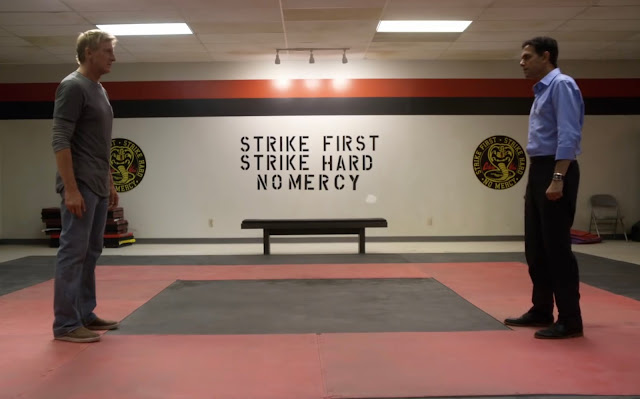Tom Cruise tweeted out a “teaser” image for “Top Gun 2” with the hashtag #Day1 today.
The image of Cruise holding Pete Mitchell’s “Maverick” flight helmet — while he looks at an F-18 Hornet from a distance — is awesome.
(Since F-14 Tomcats were retired from service in 2006, F-18s will be featured prominently in the new movie.)
I saw “Top Gun” several times at Omaha’s defunct Indian Hills theater back in 1986. Watching those flight sequences on that massive “Cinerama screen” was a breathtaking experience.
“Top Gun” epitomizes movies of the 1980s. Attractive cast, soundtrack full of hits... loud, fast, and fun.
Last August I wrote a post titled “Two-Paragraph Tuesday: Right Into The ‘Danger Zone’” about an old 45-rpm vinyl record I purchased in ‘86 of Kenny Loggins’s hit single from the “Top Gun Original Motion Picture Soundtrack.”
(I still think my wife Bridget should let me get a turntable, but alas...)
That soundtrack is one of my favorites — from Loggins’s “Danger Zone” to Berlin’s “Take My Breath Away” to Harold Faltermeyer’s “Top Gun Anthem” (which my brother-in-law Sean mentioned was originally meant for a “dream sequence” in the movie “Fletch).
I remember pre-ordering “Top Gun” on VHS from the Applause Video that used to be at 84th and Dodge.
One of the first movies I purchased on DVD (when I bought my initial DVD player) was “Top Gun.”
(Bridget and I are also big fans of the similarly-styled Cruise/Simpson/Bruckheimer film “Days of Thunder”).
In the intervening years, I’ve purchased “Top Gun” on Blu-ray (the movie has yet to be released on disc in 4K).
I can’t wait to see Tom Cruise suit up as jet jock Pete Mitchell in this “Top Gun” sequel.
My only hope is that they keep it authentic — and avoid “fake-looking” CG flight sequences (which permeate so many action movies these days).
Knowing what a perfectionist Tom Cruise is — and his penchant for doing insane stunt work — I’d imagine that the producers will try to keep things real.
I realize I am probably too big a “nostalgia buff” for my own good (my wife constantly teases me about that fact), but it is just so much fun to revisit pop culture’s past.
For example, YouTube’s wonderful “Karate Kid” sequel series “Cobra Kai” (read my review of "Cobra Kai") completely hit the mark. It wasn’t merely nostalgia for nostalgia’s sake, and reminded us why we still love those iconic characters.
Cruise has stayed amazingly youthful in appearance — which should add credibility when doing a sequel to a movie that’s 32 years old. We can only hope that Val Kilmer has been working out the past couple of years...
Time to pull those old bomber jackets out of mothballs, dust off the aviator glasses, buzz the tower, and head back “into the danger zone.”
Can’t wait...!
Previous post: Book Review: "Oath of Honor" by Matthew Betley




















































